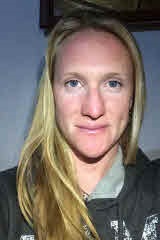
Katie Bigham
Resilience of deep-sea benthic communities to turbidity flows following the 2016 Kaikōura earthquake
Professor of Marine Biology
School of Biological Sciences

Resilience of deep-sea benthic communities to turbidity flows following the 2016 Kaikōura earthquake
The focus of my PhD is to understand the impacts of a large-scale turbidity flow—underwater avalanche—on the deep-sea benthic community of Kaikōura Canyon, off the coast of New Zealand. Once one of the most productive deep-sea environments ever measured, the community was wiped out following the turbidity flow triggered by the 2016 Kaikōura earthquake. Using images and sediment cores collected before and after the turbidity flow, my project aims to understand if and how this community across the size spectrum of animals (meio-, macro-, and megafauna) can recover from a large-scale disturbance. Insights from the research will be used to inform management of New Zealand’s marine protected areas and speculate on the effects of deep-sea mining.

Resilience of seamount benthic communities to fishing disturbance

Sedimentation impacts on deep-sea macroinfauna of the Chatham Rise
My research focuses on benthic ecology in the deep sea and how disturbance can affect community structure and function. In order to understand these impacts, I am currently investigating the effects of physical disturbance and sedimentation on soft-sediment macrofaunal communities on the Chatham Rise. This work will provide a better understanding of the ecological impacts of sedimentation as a result of deep-sea mining and trawling.

Habitat use by deep-sea Chondrichthyans
My research looks at how chondrichthyans (sharks, rays, and chimaera) are using habitat in the deep sea of the New Zealand Exclusive Economic Zone.
Using video footage collected by NIWA and Te Papa, I am looking for sites that are being used by chondrichthyans for important life history events—such as egg laying or nursery grounds. I am also using this information to ascertain if these animals can be more predictably found at certain sites of interest. This research aims to provide important habitat information to help fill knowledge gaps for these animals, and improve risk assessments of their vulnerability to disturbance by human activities such as fishing.